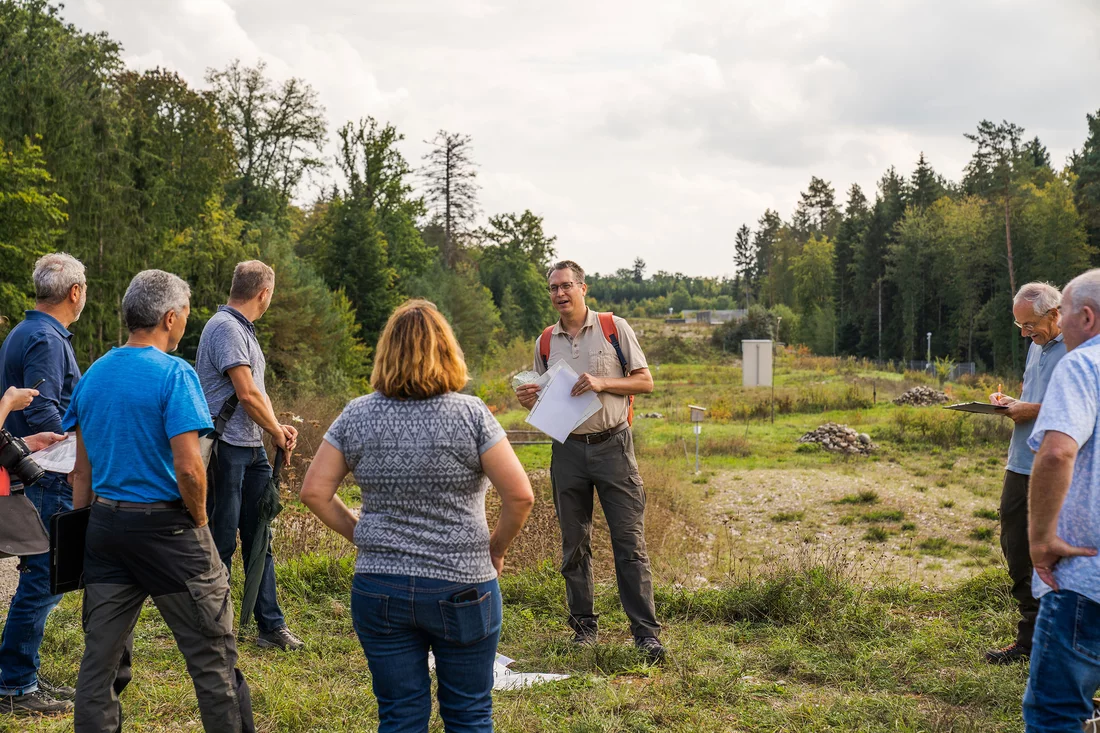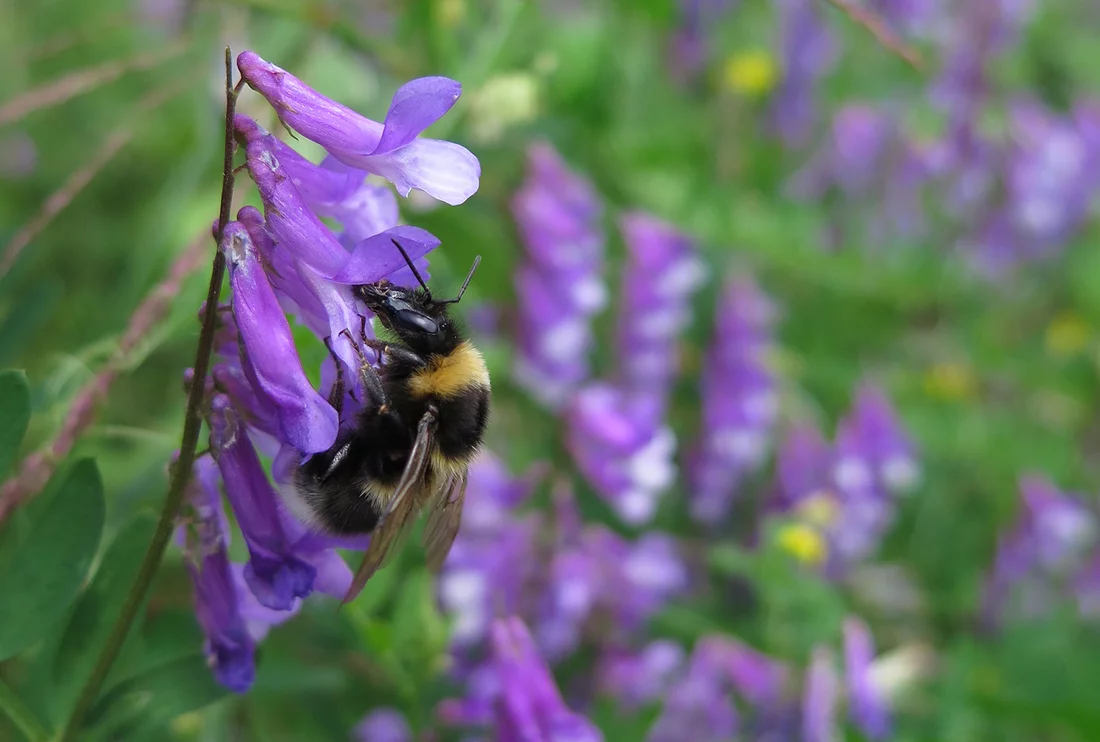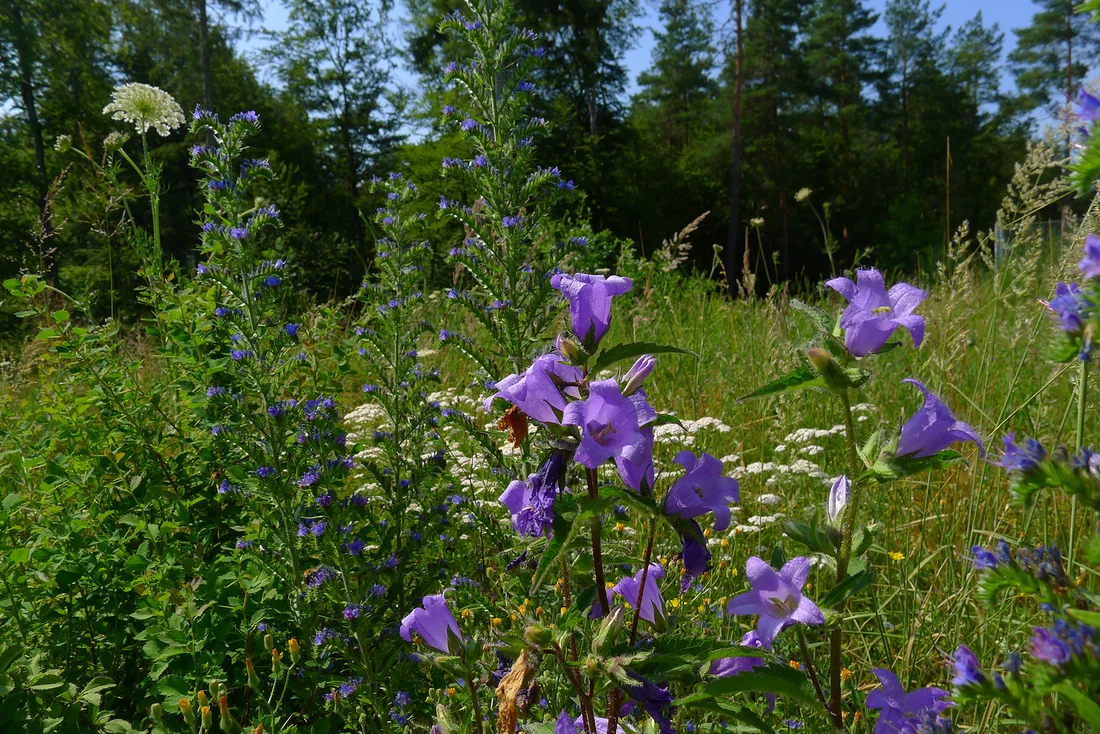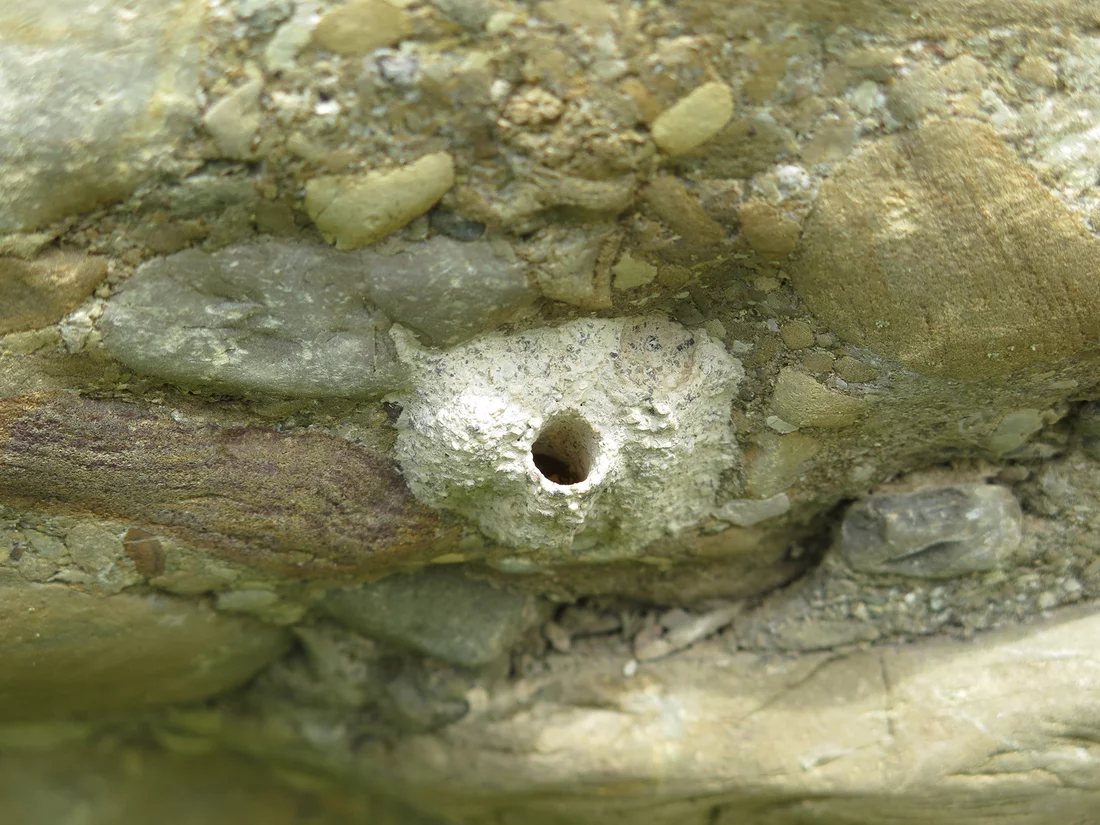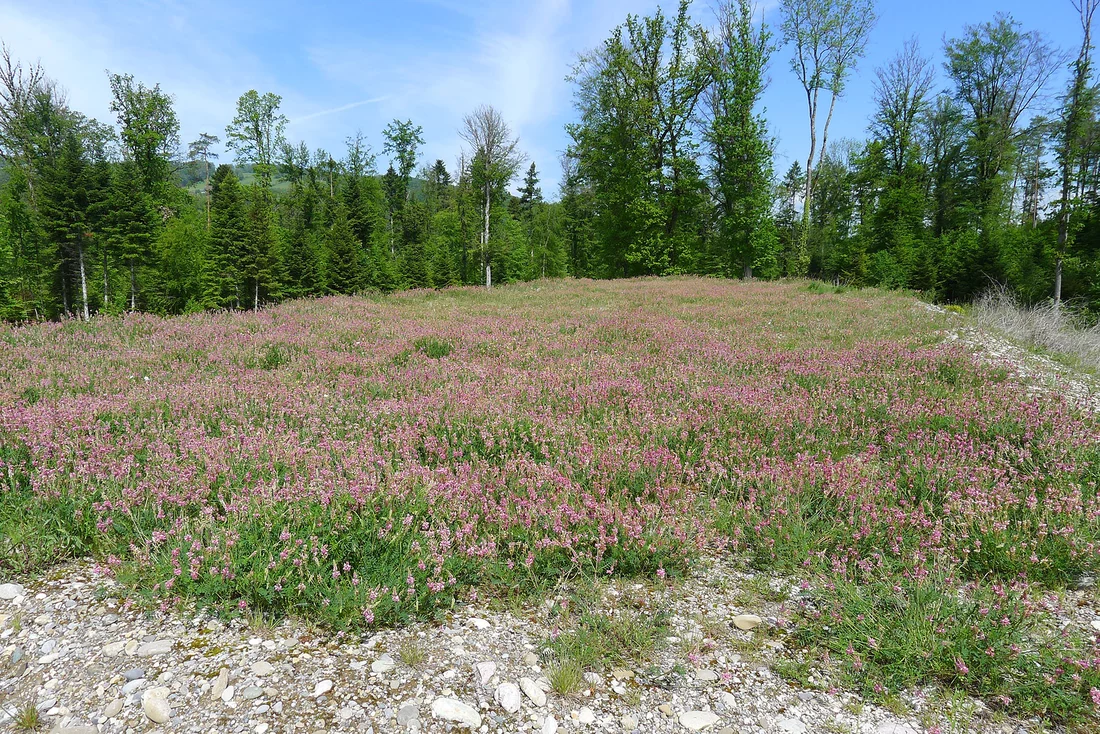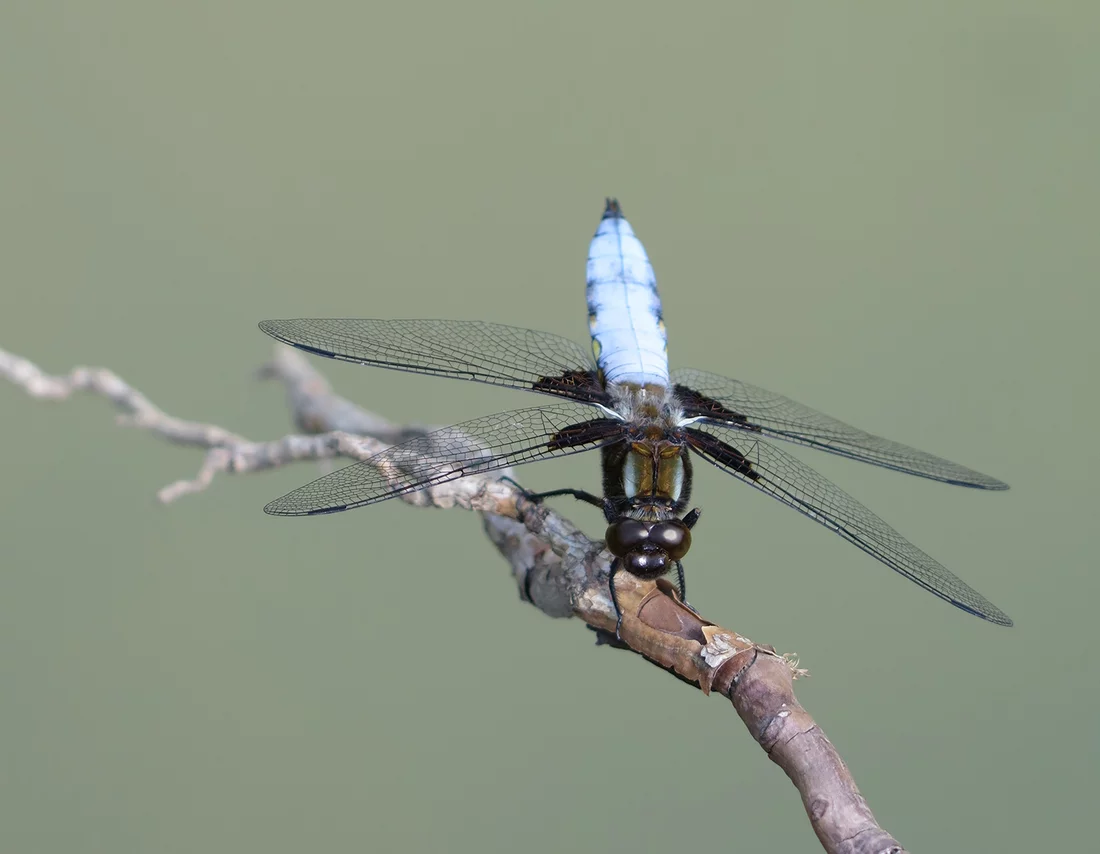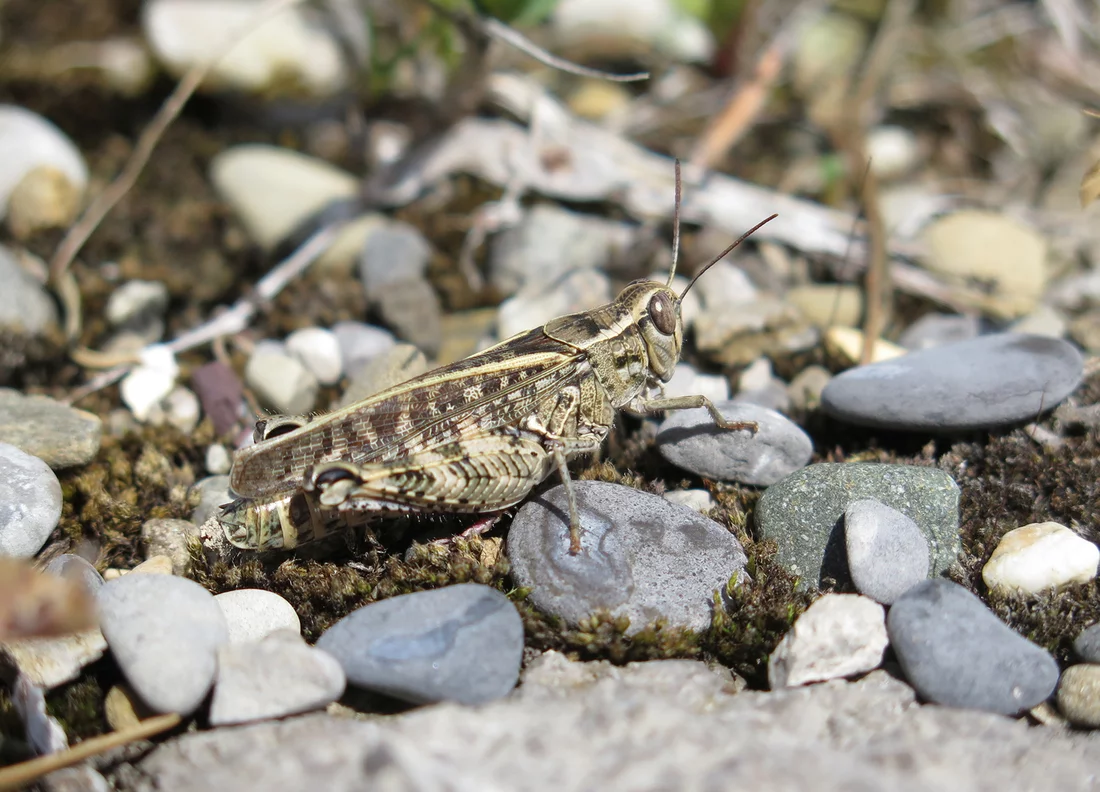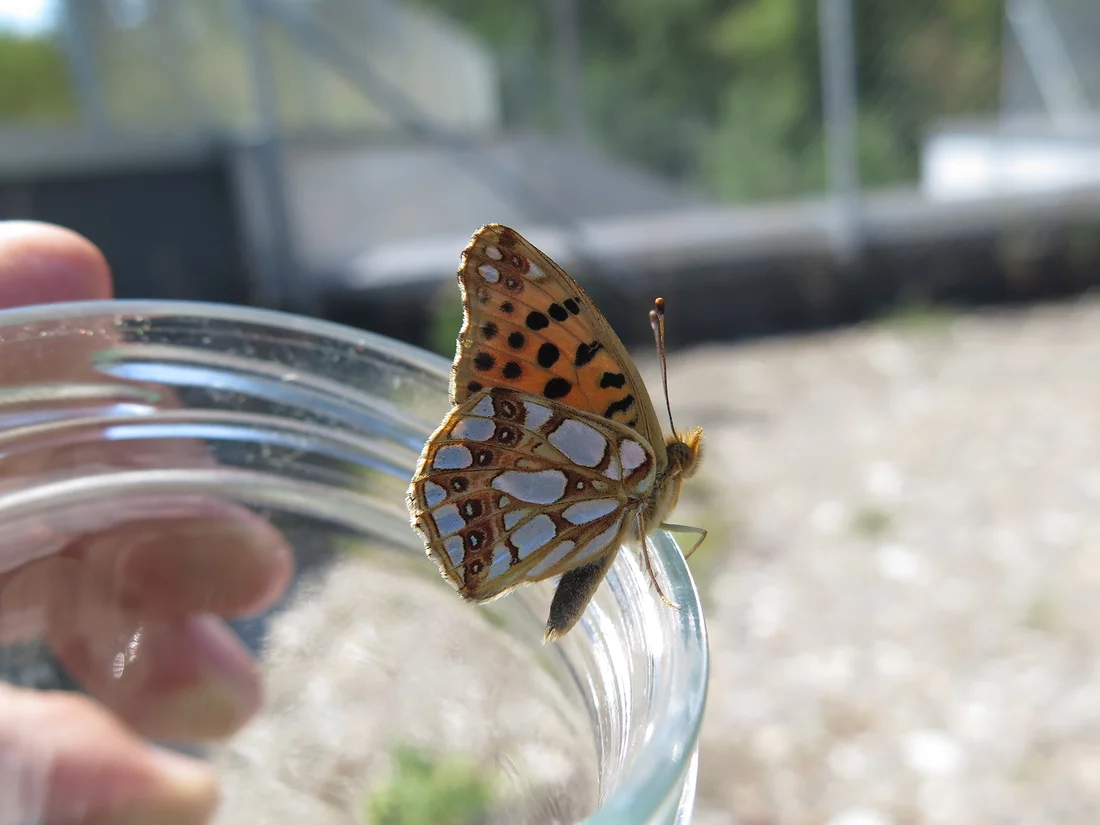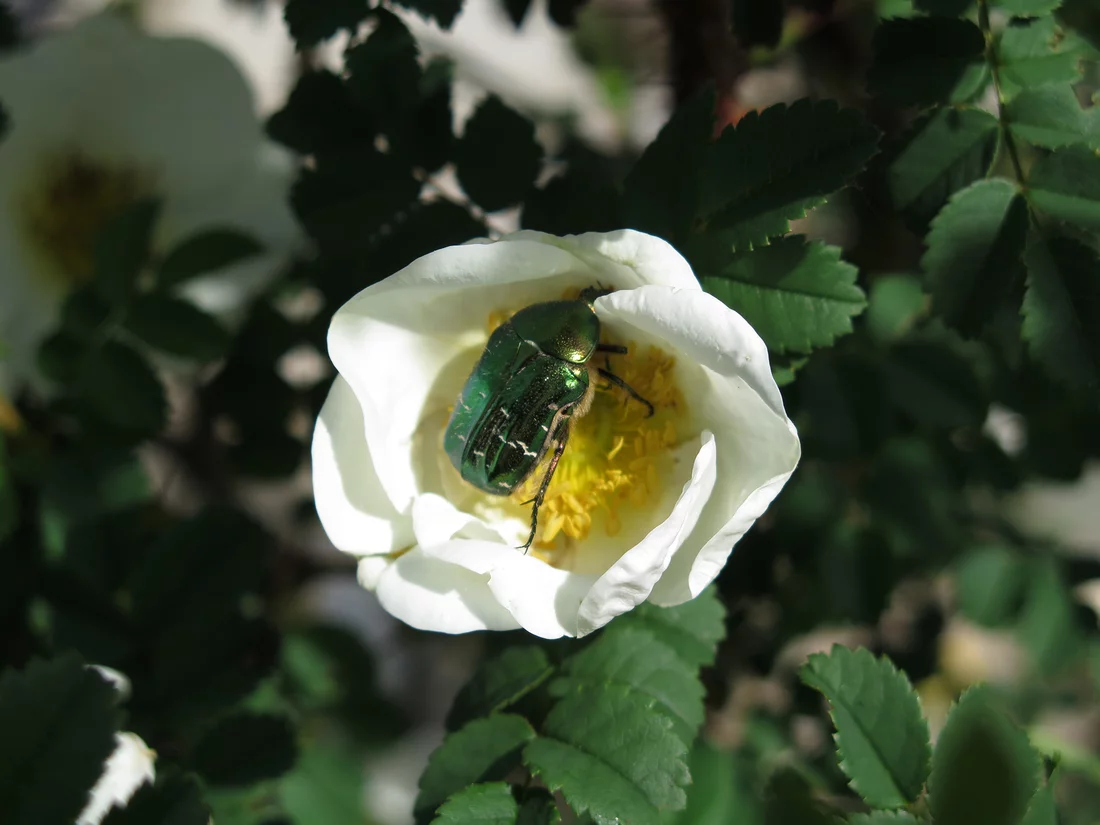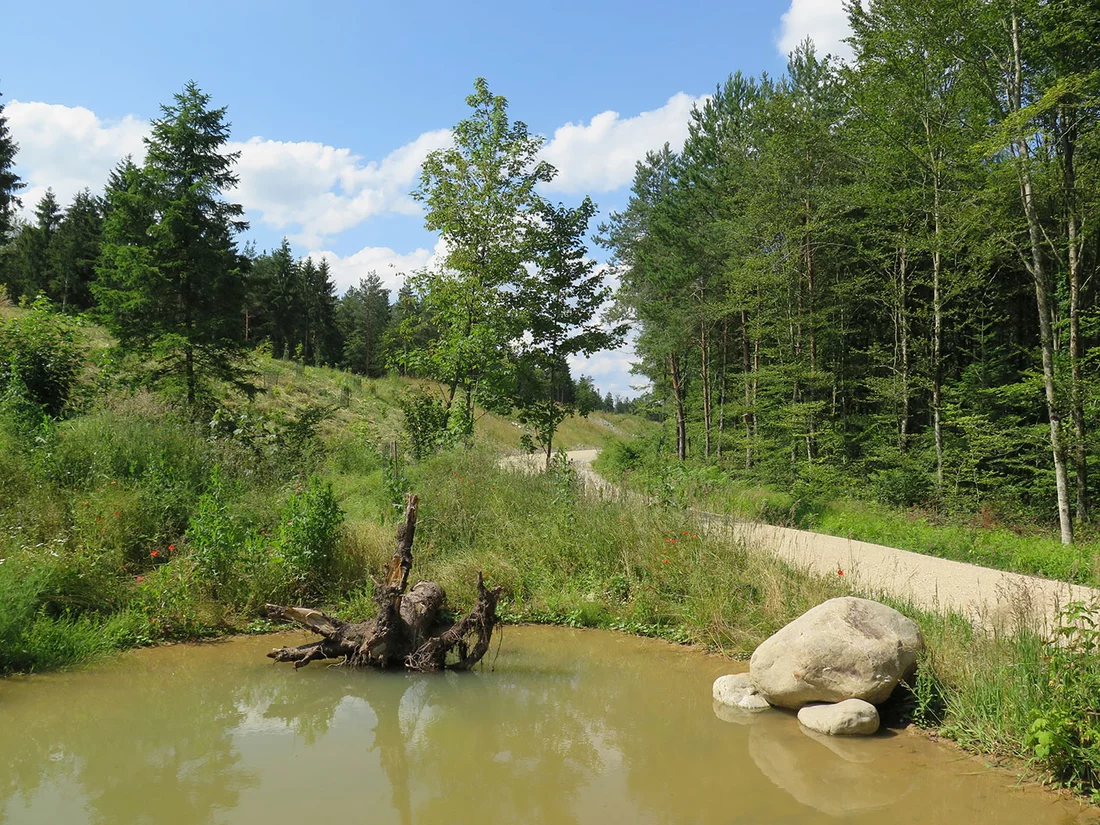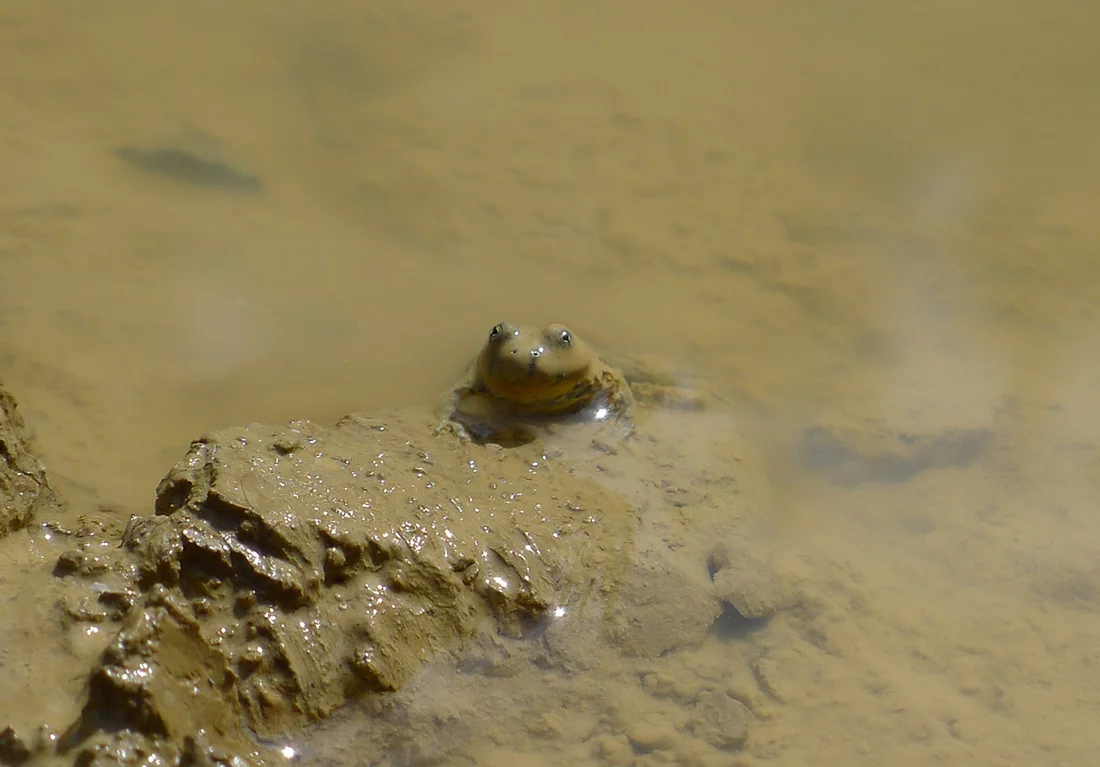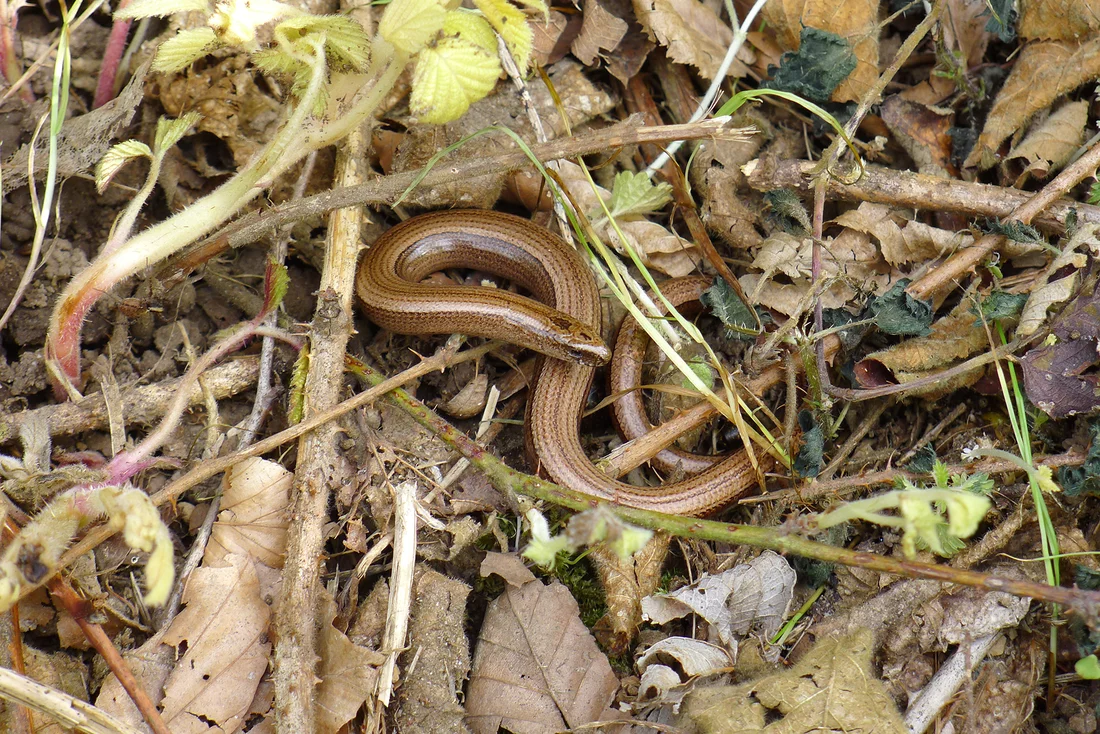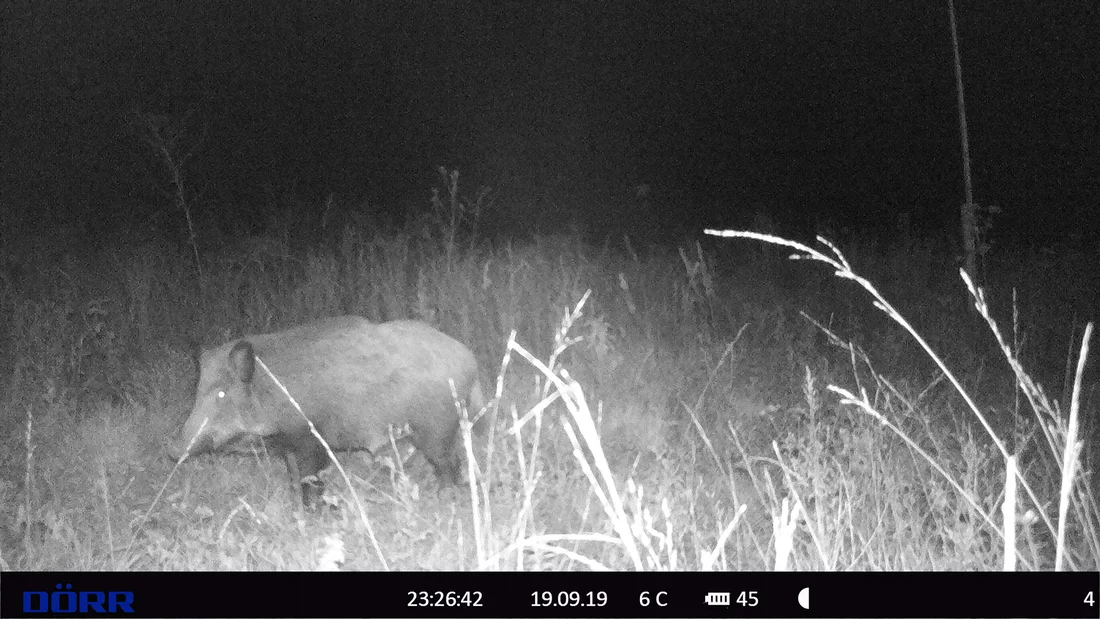For the construction of the X-ray free-electron laser SwissFEL at the Paul Scherrer Institute in 2013, around five hectares of Würenlingen forest were cleared and transformed into a new habitat for flora and fauna. Biologists and forest engineers have recently assessed the results of the renaturization project and are excited about the progress to date. The site is now home to several rare animal and plant species, including the yellow-bellied toad and the black mortar bee, which is threatened with extinction in Switzerland.
Below the embankment almost 800 metres long in the Würenlingen forest, scientists are experimenting with X-ray laser pulses, allowing them to observe extremely rapid processes such as the formation of new molecules during chemical reactions. But things are just as exciting on and around the embankment. Outside of winter, the whole area is lush and blooming, and teeming with crawling, fluttering, crawling and hopping wildlife. The former construction trench in the forest has been transformed into a paradise for amphibians, insects and other animals thanks to the carefully planned ecological restoration measures, making it a haven for nature lovers to visit.
"A meadow in the forest is a rich environmental resource," explains the forest engineer Tobias Liechti from the engineering consultants Sieber & Liechti, who carries out regular site inspections for PSI to make progress reports. "Take beetles, for example: they lay their eggs in wood, but eat pollen. So they need both forest and meadow habitats." Tobias Liechti is inspired by the ecological restoration project at PSI: "Restoring such a large area is a rare event in Switzerland. But in the midst of a forest too? That’s pretty unique."
Creato, a cooperative agency specialising in environmental planning, was commissioned to determine how SwissFEL could embed itself in its new surroundings with the maximum beneficial impact on the local environment. The site of around five hectares developed into a patchwork of valuable biotopes for animals and plants: wildflower meadows, embankments, ponds, sand areas and much more besides. The fifth inspection report by Sieber & Liechti highlights the success of the project across the board – and records many new residents.
A paradise for wild bees
A specialist in wild bees who was part of the inspection team counted 76 different wild bee species during her many walks around SwissFEL. "That’s equivalent to 10% of all species found in Switzerland," stresses Tobias Liechti. As many as 17 species are even on the Red List of endangered animals.
One particular highlight: the black mortar bee (Megachile parietina) has made its home here. This species of wild bee is threatened with extinction in Switzerland: there are only a few remaining populations in the Valais and in northeast Switzerland. To feed enough pollen and nectar to just one offspring, this bee requires over a thousand sainfoin blooms, a pink-purple flowering clover which rarely grows anywhere else in such large quantities. A vast crop of sainfoin blooming around SwissFEL in spring has allowed the black mortar bee to build up a local community, as there is enough to feed on for both the parents and their offspring.
Unlike honeybees, most species of wild bees are solitary: they make individual burrows, often underground. Others build a nest out of dry mud. This has encouraged PSI to create extra sand areas and keep them permanently free of weeds.
Seed and larvae drafted in from outside
To quickly cover the SwissFEL area with grassland after its construction, a special method known as "direct greening" was used: meadows in Villigen and Döttingen were mown and the cuttings spread across the SwissFEL terrain. "With this method we are not only transferring plant seeds, but also insects, spiders and fungal spores," Liechti explains.
As the inspection reports confirm, this method has been extremely successful. Many of the plants growing on embankment come from the original donor meadows, including the common rock-rose (Helianthemum nummularium), the tuberous thistle (Cirsium tuberosum), the squinancywort (Asperula cynanchica) and the clustered bellflower (Campanula glomerata).
Around 200 different plant species are currently growing on the site. Some of the land is dedicated to wild-flower meadows low in nutrients, which have become particularly valuable in Switzerland. Wild plants grow here that have a hard time on fertilised areas and have therefore become rare in our modern agricultural society.
However, such meadows need a lot of care: the endangered species can only survive if regular mowing is carried out to remove nutrients from the meadow. PSI handles this and also keeps in check invasive plants like brambles, which would otherwise overgrow everything. In the first few years, extra effort was made to remove any neophytes: species that are not native to Switzerland but spreading quickly across the country. Examples include South African ragwort (Senecio inaequidens) which had to be repeatedly removed. "We’ve now got that under control," says Liechti.
Bursting with wildlife
Anyone walking around the SwissFEL site should look down at their feet: they will see grasshoppers hopping about, disturbed by the unexpected visitor. Already 14 different species have settled here, more than usually found on Swiss meadows, according to Liechti. Among them are the fluorescent green sickle-bearing bush-cricket (Phaneroptera falcata) and the brownish, up to 2.5 cm long bow-winged grasshopper (Chorthippus biguttulus), which emits the typical grasshopper chirping that can be heard far and wide.
Many of the grasshopper species have presumably been transferred to SwissFEL as larvae in the cuttings from the donor meadows, Liechti explains. But not all of them: the Italian locust (Calliptamus italicus), a recent arrival in 2019, arrived at the site under its own steam. "It flew many kilometres to get here. It’s wonderful to have it here, as it’s quite rare to find in the canton of Aargau." This proves that animals generally manage to find a suitable environment, no matter how far away it may be.
Liechti says the collection of reptiles on site is "more than I could wish for". Common wall lizards (Podarcis muralis) and green sand lizards (Lacerta agilis) are both well established. Snake lovers can see the barred grass snake (Natrix Helvetica), which has already bred successfully on the SwissFEL terrain.
Visits from badgers, foxes and wild boars
Some of the SwissFEL mound was covered with humus to encourage grass to grow. Shrubs were planted as well. The idea of these sections is to give wildlife a safe passage. Four wildlife cameras take snapshots of everything that crosses the dam – which is quite a lot. "Deer pass by almost every day," says Markus Hossli from Würenlingen forestry commission, who monitors the photos taken by the cameras. "But the cameras also frequently capture foxes, badgers and even wild boars."
On the western edge of the forest a total of six small ponds have been created. There, dragonflies often hover above the water, such as the migrant hawker (Aeshna mixta), a bluish-green species approximately six centimetres long. "Dragonflies from the River Aare also come here to hunt as there are so many insects," Liechti says.
Amphibians have also moved into the ponds as planned: in addition to the usual green water frogs (Ranidae), there are also common grass frogs (Rana temporaria), alpine newts (Ichthyosaura alpestris), palmate newts (Lissotriton helveticus) and common toads (Bufo bufo). To the delight of conservationists, even the yellow-bellied toad (Bombina variegata) has settled in the ponds. This is a highly endangered species in Switzerland and its dull brownish back conceals a striking black and yellow belly underneath.
"PSI has created a wonderful natural oasis here in the Würenlingen forest," Tobias Liechti sums up. "The project is making fantastic progress." Another review is due in five years’ time.
Text: Paul Scherrer Institute/Brigitte Osterath
Copyright
PSI provides image and/or video material free of charge for media coverage of the content of the above text. Use of this material for other purposes is not permitted. This also includes the transfer of the image and video material into databases as well as sale by third parties.

